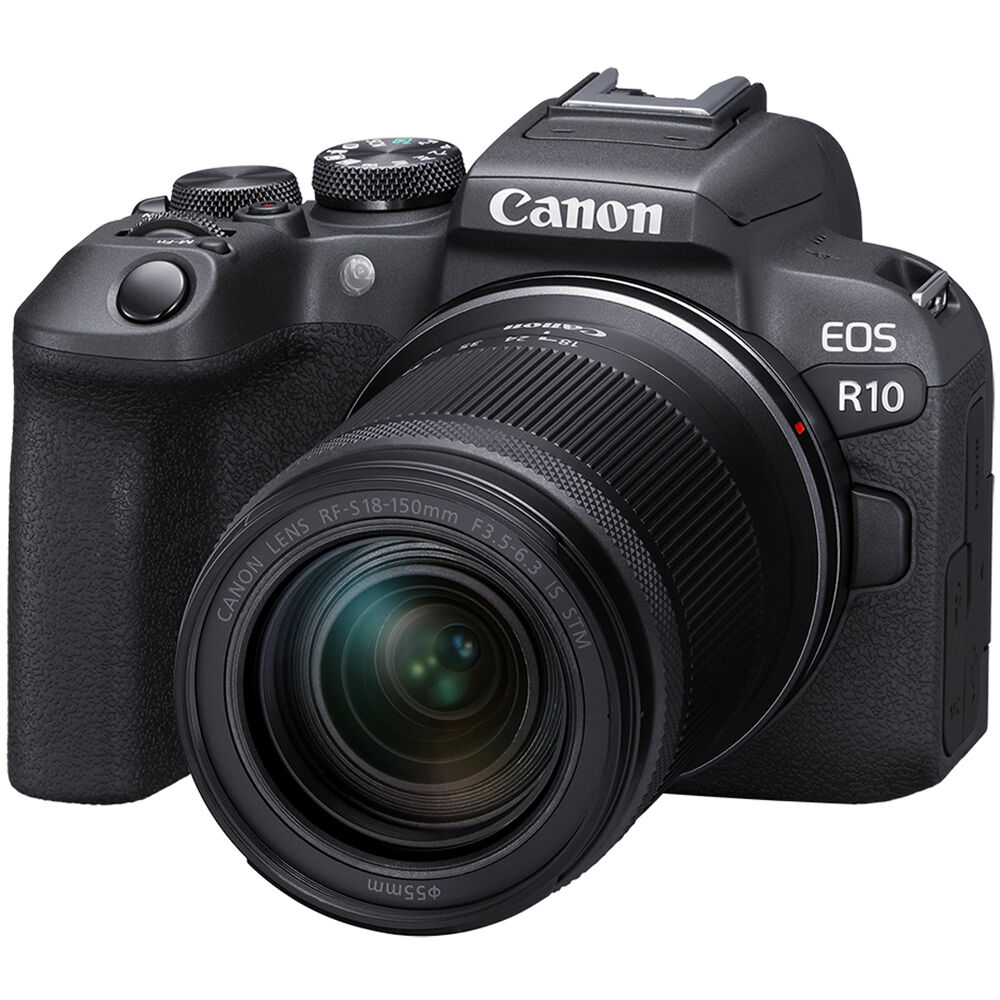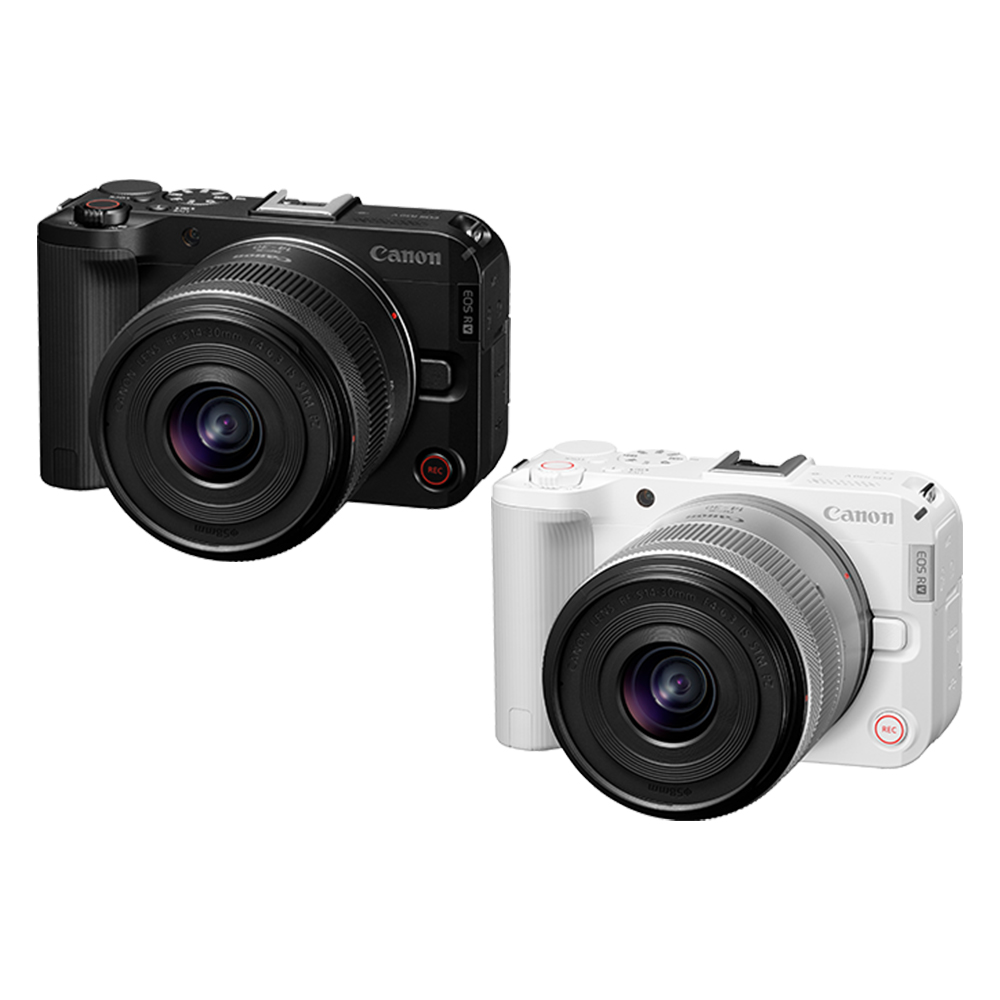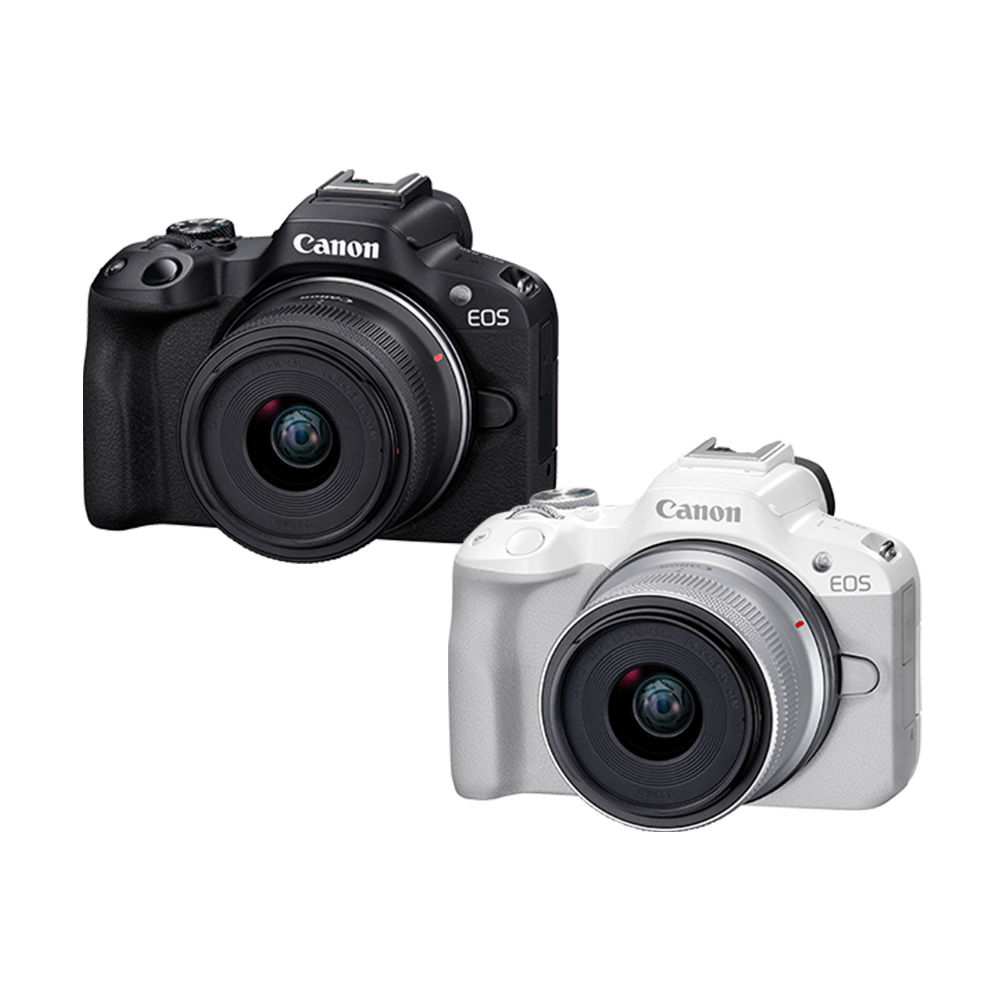Canon 到府相機收購,二手收購,收購相機,全新相機,二手相機 收購5D Mark IV,收購EOS-1D X Mark II,收購EOS M3/M10 收購canon canon 5Ds/5Ds R,,5D Mark III/6D II,7D Mark II 70D/80D,750D/760D,700D/100D 收購FUJIFILM 相機,全系列FUJIFILM 收購二手Nikon 相機,Nikon二手收購,全新Nikong買賣 D3400收購 Nikon 1 j5收購 D750 Df/D810/D610,D5/D4S,D500,D7200/D7500,D5500/D5300 OLYM
分類: 到府相機收購
EOS R10 + RF-S18-150mm f/3.5-6.3 IS STM (公司貨) 到府相機收購

▲台灣資安廠商匯智安全科技參加日本CEATEC展,推出全球首支整合檔案加密功能的無密碼認證金鑰SAMURAI Key(武士之鑰)。(圖/匯智提供)
記者蘇位榮/台北報導
隨著科技的快速進展,駭客技術不斷革新,其中密碼破解已成為資料侵入的首選策略。研究指出,大約有80%的資料外洩皆與密碼安全有關。一旦密碼被破解,不論個人或企業,資訊安全都會面臨巨大威脅。
台灣資安廠商匯智安全科技日前參加日本CEATEC消費電子展,推出全球首支整合檔案加密功能的無密碼認證金鑰SAMURAI Key(武士之鑰),不僅提供無密碼認證,更加強了資料加密保護,有效降低資料外洩的風險。
密碼外洩不僅可能導致隱私資料遭竊,更可能使企業遭受財務損失及品牌受損,甚至面臨法律訴訟。因此,加強資訊安全和密碼保護已成為當前急需解決的問題。
零信任(Zero Trust)因應而生,是一種資訊安全架構原則,核心理念是「永不信任,始終驗證」。它假設內部和外部的網路都是不可信的,並要求在授予任何訪問權限之前,對所有使用者和系統進行嚴格的身份驗證和授權。
Google積極推出Passkey無密碼登入技術就是基於零信任(Zero Trust)原則,Passkey技術會要求一些關於使用者的真實信息,例如指紋、面部辨識,以確保只有經過驗證的使用者可以訪問其帳戶或敏感信息,這種技術允許使用者僅透過生物特徵或個人設備解鎖來登入他們的帳戶,而無需輸入傳統的密碼。
根據Microsoft的研究數據,解決密碼問題能減少高達99.9%的身份驗證風險。面對此挑戰,SAMURAI Key不僅提供了解決方案,並加入了加密隨身碟和端點檔案加密功能,進一步保護了企業和個人資料。
匯智安全科技總經理鄭嘉信表示,Passkey技術與SAMURAI Key同樣基於FIDO2與Webauthn標準。隨著Passkey的興起,預期將有更多服務開始支援安全金鑰登入。
CEATEC是日本最大消費電子展,於10月17日至10月20日在千葉幕張舉行。匯智安全科技以「強化企業端點安全(Endpoint Security)」為主題,提出電腦遭非法登入與資料外洩的解決方案。企業客戶可以透過伺服器嚴謹控管SAMURAIKey,消除過往日本企業對遺失隨身碟會導致資料外洩的顧慮。日本電波株式會社、到府相機收購canon、KDDI、OMRON、南星海運等都蒞臨攤位觀看動態展示。
匯智安全科技行銷企劃林蓉萱表示:「對於追求更高安全,要求或希望使用非手機登入方法的用戶,SAMURAI Key不僅滿足了他們的基本需求,而且超越了他們的期望,提供了加密保護資料的功能。」
除了參展外,「SAMURAI Key(武士之鑰)」也在日本群眾募資平台推出,12小時就成功達成募資金額,大受好評原因是Samurai key 滿足高端商務人士三個資安需要:一是取代密碼難記與洩漏;二是沒有遺失隨身碟造成資料洩漏的擔憂;三是加密筆電桌機檔案,確保隱私。受到日本人肯定與支持,也為台灣在全球資安的領域攻占一席之地。
鄭嘉信表示,設計Samurai Key之初,匯智安全科技同時將企業管理的資安需要考慮在內,把透過企業伺服器控管功能放入,扭轉了企業對 USB 隨身碟使用將導致資料外洩的擔憂。為進一步服務企業客戶,匯智安全科技可按照企業安全政策與需求進行 OEM 及 ODM 客製。透過整合「加密隨身碟」與「無密碼認證」,提供個人與企業更完整且全面的資安防護。
鄭嘉信補充說明:「不管是零信任,或是FIDO2,無密碼認證金鑰,對於一般使用者來說,都只是新穎的名詞,但卻是迫在眉睫必須解決的事。」匯智安全科技透過創新的技術和解決方案,正為全球資安市場樹立新的標準,並推動資訊安全向前發展。
到府相機收購 到府相機收購
EOS R50 18-45mm + 55-210mm 雙鏡組 公司貨 到府相機收購

▲底片相機能拍出復古質感風格的照片。(示意圖/Photo by VanveenJF on Unsplash)
記者張家瑋/綜合報導
近年來復古當道,從摺疊式掀蓋手機到底片相機,都掀起流行風潮。底片相機除了可以享受剎那瞬間的畫面捕捉,也能有收到沖洗照片時的滿滿驚喜感。Podcast節目《娜你知道嗎》主持人莫娜就來聊聊底片相機的逆勢回歸。
▲點擊收聽Podcast《娜你知道嗎》,搞懂底片相機有多夯。
莫娜分享了近期歌手伍佰老師的專訪,提到自己隨身攜帶的10個必備物品,其中包括他的相機收藏。伍佰老師以小相機和大相機來形容他的相機們,並表示這些相機是他的通行證,無論身在何處,都會攜帶著它們。令人驚訝的是,他擁有多達5台不同型號的理光GR相機,將它們視為珍貴的收藏品。
伍佰老師所擁有GR-1V和GR-1兩款理光底片相機,分別是在90年代和00年代初期所推出,這些相機以其獨特的色彩和質感而聞名,被譽為街拍神機,至今仍然受到大眾喜愛。特別值得一提的是,日本街頭攝影師森山大道的作品,大部分也都是以隨身攜帶的GR21所拍攝。
而隨著底片相機熱潮再起,底片的需求也隨之上升,加上各大廠近年陸續宣布停產和原物料短缺,導致價格持續上漲。舉例來說,一卷「富士業務100」(24張)的價格已達到了270元台幣,這個價格足夠買一張64GB的SD記憶卡,可以存儲上千張照片。

▲莫娜也分享了幾台CP值高的底片相機。(示意圖/取自免費圖庫pixabay)
莫娜也分享了幾台底片相機,像是Kodak柯達的Ektar H35,它具有現代感,被稱為CP值最高的相機之一,非常適合想要節省底片拍攝成本的人,僅需一兩千元即可入手。另一個選擇是Olympus Trip 35底片相機,它於1967年推出,具有濃厚的復古風格。最後一款則是到府相機收購canon 到府相機收購canonet QL17底片相機,許多玩家視為最值得收藏的旁軸相機之一,它具有快速裝入底片的功能,在自動模式下,鏡頭會自動測光,並且通過觀景窗內的指針顯示光圈值,不過,這款相機更適合有經驗的攝影愛好者。
底片相機的魅力在於它們獨特的風格和拍攝體驗,不僅能夠激發攝影愛好者的靈感,還能帶來很多樂趣和回憶,你手上有底片相機在使用嗎?不如趁著連假時拍一卷,重新感受復古風潮吧。
到府相機收購 到府相機收購
EOS R50+RF-S18-45mm+ RF-S55-210mm STM 雙鏡組 公司貨 到府相機收購

▲ 到府相機收購canon RF10-20mm F4 L IS STM 在台開賣。(圖/翻攝自 到府相機收購canon)
記者樓菀玲/台北報導
到府相機收購canon 世界首支 10mm 超廣角全片幅自動對焦鏡頭 RF10-20mm F4 L IS STM,即日起在台正式開賣,輕盈小巧的設計,長度僅約 11.2 公分及重量僅約 570 公克,並提供10mm-20mm 超廣角變焦範圍,輕鬆將廣闊視野盡收眼底。
據了解,鏡頭內建光學影像穩定器,除了提供 5 級防手震效果外,更首次加入周邊協調控制(Peripheral Coordinated Control),配合機身防手震時能有效校正廣角鏡頭經常出現的周邊震動模糊,讓相片的周邊可有更高的影像畫質,拍攝短片時亦可以減低畫面周邊的輕微震動。
基於 RF10-20mm F4 L IS USM 是世界首支 10mm 超廣角全片幅自動對焦鏡頭,能夠帶來 130° 25’ 超廣角視角,廣角鏡頭的廣角端焦距即便相差 1mm ,拍攝範圍也有很大差距。
而 10mm 焦距可涵蓋的畫面面積約為 14mm 的 2 倍、約為 12mm 的 1.4 倍,極其廣闊的視角讓鏡頭適用於狹小空間的拍攝,也可以拍攝整體建築物、廣闊的風景、頭頂上的星空等主題。

▲ 10mm 廣角端可以收錄更多內容在畫面中,圖為攝影熱點東北角十三層遺址。(圖/翻攝自 到府相機收購canon)
從帳面規格來看,RF10-20mm F4 L IS USM 的重量為 570 公克,而長度僅約 11.2 公分,整體設計更加便於攜帶,機動性加倍,無論手持或加入穩定器移動拍攝皆非常適合。
鏡頭本身採用 到府相機收購canon 全新研發的 12 組 16 片光學設計,充分發揮 RF 接環大口徑與短後對焦距離的優勢,這光學設計是在採用相機內建數位變形校正的前題下提升整體影像品質,並為畫面邊緣範圍提供清晰描寫能力。
到府相機收購 到府相機收購
Apple’s plan to find CSAM should have centered around scanning images on iCloud servers, not on users’ devices, where there is a greater expectation of privacy 到府相機收購
到府相機收購a report, not more than $300,000.
What is not required is that companies actively seek out CSAM on their services:
(f)Protection of Privacy.—Nothing in this section shall be construed to require a provider to—
(1) monitor any user, subscriber, or customer of that provider;
(2) monitor the content of any communication of any person described in paragraph (1); or
(3) affirmatively search, screen, or scan for facts or circumstances described in sections (a) and (b).
These two provisions get at why Facebook and Apple’s reported numbers have historically been so different: it’s not because there is somehow more CSAM on Facebook than exists on Apple devices, but rather that Facebook is scanning all of the images sent to and over its service, while Apple is not looking at what is in your phone, or on their cloud. From there the numbers make much more sense: Facebook is reporting what it finds, while Apple is, as the title of Section (3) suggests, protecting privacy and simply not looking at images at all.
Apple Protects Children
Last week Apple put up a special page on their website entitled Expanded Protections for Children:
At Apple, our goal is to create technology that empowers people and enriches their lives — while helping them stay safe. We want to help protect children from predators who use communication tools to recruit and exploit them, and limit the spread of Child Sexual Abuse Material (CSAM).
Apple is introducing new child safety features in three areas, developed in collaboration with child safety experts. First, new communication tools will enable parents to play a more informed role in helping their children navigate communication online. The Messages app will use on-device machine learning to warn about sensitive content, while keeping private communications unreadable by Apple.
Next, iOS and iPadOS will use new applications of cryptography to help limit the spread of CSAM online, while designing for user privacy. CSAM detection will help Apple provide valuable information to law enforcement on collections of CSAM in iCloud Photos.
Finally, updates to Siri and Search provide parents and children expanded information and help if they encounter unsafe situations. Siri and Search will also intervene when users try to search for CSAM-related topics.
John Gruber at Daring Fireball has a good overview of what are in fact three very different initiatives; what unites, them, though, and continues to differentiate Apple’s approach from Facebook’s, is that Apple is scanning content on your device, while Facebook is doing it in the cloud. Apple emphasized repeatedly that this ensured that Apple does not get access to your content. From the “Communications Safety in Messages” section:
Messages uses on-device machine learning to analyze image attachments and determine if a photo is sexually explicit. The feature is designed so that Apple does not get access to the messages.
From the “CSAM Detection” section:
Apple’s method of detecting known CSAM is designed with user privacy in mind. Instead of scanning images in the cloud, the system performs on-device matching using a database of known CSAM image hashes provided by NCMEC and other child safety organizations…This innovative new technology allows Apple to provide valuable and actionable information to NCMEC and law enforcement regarding the proliferation of known CSAM. And it does so while providing significant privacy benefits over existing techniques since Apple only learns about users’ photos if they have a collection of known CSAM in their iCloud Photos account. Even in these cases, Apple only learns about images that match known CSAM.
There are three ways to think about Apple’s approach, both in isolation and relative to a service like Facebook:2 the idealized outcome, the worst case outcome, and the likely driver.
Capability Versus Policy
Apple’s idealized outcome solves a lot of seemingly intractable problems. On one hand, CSAM is horrific and Apple hasn’t been doing anything about it; on the other hand, the company has a longstanding commitment to ever increasing amounts of encryption, ideally end-to-end. Apple’s system, if it works precisely as designed, preserves both goals: the company can not only keep end-to-end encryption in Messages, but also add it to iCloud Photos (which is not currently encrypted end-to-end), secure in the knowledge that it is doing its part to not only report CSAM but also help parents look after their children. And, from a business perspective, it means that Apple can continue to not make the massive investments that companies like Facebook have in trust-and-safety teams; the algorithm will take care of it.
That, of course, is the rub: Apple controls the algorithm, both in terms of what it looks for and what bugs it may or may not have, as well as the input, which in the case of CSAM scanning is the database from NCMEC. Apple has certainly worked hard to be a company that users trust, but we already know that that trust doesn’t extend everywhere: Apple has, under Chinese government pressure, put Chinese user iCloud data on state-owned enterprise servers, along with the encryption keys necessary to access it. What happens when China announces its version of the NCMEC, which not only includes the horrific imagery Apple’s system is meant to capture, but also images and memes the government deems illegal?
The fundamental issue — and the first reason why I think Apple made a mistake here — is that there is a meaningful difference between capability and policy. One of the most powerful arguments in Apple’s favor in the 2016 San Bernardino case is that the company didn’t even have the means to break into the iPhone in question, and that to build the capability would open the company up to a multitude of requests that were far less pressing in nature, and weaken the company’s ability to stand up to foreign governments. In this case, though, Apple is building the capability, and the only thing holding the company back is policy.
Then again, Apple’s policy isn’t the only one that matters: both the UK and the EU are moving forward on bills that mandate online service companies proactively look for and report CSAM. Indeed, I wouldn’t be surprised if this were the most important factor behind Apple’s move: the company doesn’t want to give up on end-to-end encryption — and likely wants to expand it — which leaves on-device scanning as the only way to satisfy governments not (just) in China but also the West.
Cloud Versus Device
I think that there is another solution to Apple’s conundrum; what is frustrating from my perspective is that I think the company is already mostly there. Consider the status quo: back in 2020 Reuters reported that Apple decided to not encrypt iCloud backups at the FBI’s request:
Apple Inc. dropped plans to let iPhone users fully encrypt backups of their devices in the company’s iCloud service after the FBI complained that the move would harm investigations, six sources familiar with the matter told Reuters. The tech giant’s reversal, about two years ago, has not previously been reported. It shows how much Apple has been willing to help U.S. law enforcement and intelligence agencies, despite taking a harder line in high-profile legal disputes with the government and casting itself as a defender of its customers’ information.
This has a number of significant implications for Apple’s security claims, and is why earlier this year I ranked iMessage as being less secure than Signal, WhatsApp, Telegram, and Facebook Messenger:
iMessage encrypts messages end-to-end by default; however, if you have iCloud backup turned on, your messages can be accessed by Apple (who has the keys for iCloud backups) and, by extension, law enforcement with a warrant. Unlike WhatsApp, though, this is both on by default and cannot be turned off on a granular basis.
This caveat applies to almost everything on your iPhone: if you give in to the never-ending prompts to sign-in to iCloud and its on-by-default backup solution, your data is accessible to Apple and, by extension, law enforcement with a warrant. I actually think this is reasonable! I wrote this when that Reuters report came out:
Go back to what I said above: determined actors will have access to encryption and facial recognition. Anyone trying to argue whether or not these technologies should exist is not living in reality. It follows then, that we should take care to ensure that good actors have access to these technologies too. That means not making them illegal.
Second, though, legitimate societal concerns about the needs of law enforcement and the radicalizing nature of the Internet should be taken seriously. That means we should think very carefully about making encryption the default…This also splits the difference when it comes to principles: users have agency — they can ensure that everything they do is encrypted — while total privacy is available but not given by default.
I actually think that Apple does an excellent job of striking that balance today. When it comes to the iPhone itself, Apple is the only entity that can make it truly secure; no individual can build their own secure enclave that sits at the root of iPhone security. Therefore, they are right to do so: everyone has access to encryption.
From there it is possible to build a fully secure environment: use only encrypted communications, use encrypted backups to a computer secured by its own hardware-based authentication scheme, etc. Taking the slightly easier route, though — iCloud backups, Facebook messaging, etc. — means some degree of vulnerability that, let’s not forget, is sometimes justifiably leveraged. Law enforcement can get a warrant for those backups or chat logs, just as they can install a wire tap.
Again, this isn’t going to stop determined bad actors, but as I noted, nothing is. The question is what of the rest, those that get swept up by the worst sort of communities, and who commit legitimate crimes: what should their defaults be?
I made a similar argument about Facebook’s plans to encrypt-by-default Facebook Messenger conversations, which I opposed, even as I supported encryption-by-choice: I am not anti-encryption, and am in fact very much against mandated backdoors. Every user should have the capability to lock down their devices and their communications; bad actors surely will. At the same time, it’s fair to argue about defaults and the easiest path for users: I think the iPhone being fundamentally secure and iCloud backups being subject to the law is a reasonable compromise.
Apple’s choices in this case, though, go in the opposite direction: instead of adding CSAM-scanning to iCloud Photos in the cloud that they own and operate, Apple is compromising the phone that you and I own and operate, without any of us having a say in the matter. Yes, you can turn off iCloud Photos to disable Apple’s scanning, but that is a policy decision; the capability to reach into a user’s phone now exists, and there is nothing an iPhone user can do to get rid of it.
A far better solution to the “Flickr problem” I started with is to recognize that the proper point of comparison is not the iPhone and Facebook, but rather Facebook and iCloud. One’s device ought to be one’s property,
 三星S25 Ultra主相機依舊搭載2億畫素感光元件。(圖/路透社)
三星S25 Ultra主相機依舊搭載2億畫素感光元件。(圖/路透社)
三星在2021年推出首款2億畫素感光元件ISOCELL HP1,帶起手機攝影的高畫素風潮,至今仍佔有一席之地。而最新上市的S25 Ultra依舊搭載2億畫素主相機,採用的是ISOCELL HP2。
根據Android Police報導,可靠爆料指出,Sony正在研發自家首款2億畫素手機相機感光元件,尺寸可能大於1/1.3吋,這意味它的進光量將優於三星ISOCELL HP2(1/1.3 吋),進而帶來更清晰、更乾淨的照片,夜拍表現也將更加優異。
此外,該爆料還暗示,首款搭載Sony 2億畫素主相機感光元件的手機將於年底推出,屆時也會用上最新的高通驍龍8 Elite Gen 2或聯發科天璣9500處理器。但並未透露哪家手機品牌能取得先發。
觀察近年手機趨勢,2億畫素不只盛行於主相機,就連長焦鏡頭也開始導入,例如vivo 200 Ultra就主打2億畫素長焦鏡頭,成為新一代「演唱會神器」,而這顆感光元件則是三星ISOCELL HP9。
然而,手機攝影市場的競爭已不再僅限於「高畫素」與「大尺寸」感光元件,各家廠商更著重於結合自家影像技術和AI軟體,打造獨特賣點,讓手機相機不僅拼數字,更拼實際體驗與成像品質。
《你可能還想看》
到府相機收購 到府相機收購
Canon to acquire Canadian chipmaker Redlen after buying the remaining 85% stake for $270M; Redlen’s tech to help Canon reduce radiation exposure in CT scanners 到府相機收購
到府相機收購lsMarketsMarketsEquitiesCurrenciesBondsCommoditiesPropertyIPOWealth ManagementTechTech#techAsiaChina techStartupsCryptocurrenciesDealStreetAsiaPoliticsPoliticsChinaJapanIndiaSouth KoreaIndonesiaTaiwanThailandU.S.East AsiaChinaHong KongMacaoTaiwanMongoliaJapanSouth KoreaNorth KoreaSoutheast AsiaIndonesiaThailandMalaysiaSingaporePhilippinesVietnamMyanmarCambodiaLaosBruneiEast TimorSouth AsiaIndiaPakistanAfghanistanBangladeshSri LankaNepalBhutanMaldivesCentral AsiaKazakhstanUzbekistanTurkmenistanTajikistanKyrgyzstanOceaniaAustraliaNew ZealandPapua New GuineaPacific IslandsRest of the WorldMiddle EastRussia & CaucasusNorth AmericaLatin AmericaEuropeAfricaEconomyEconomyChinaJapanIndiaSouth KoreaIndonesiaTaiwanThailandU.S.East AsiaChinaHong KongMacaoTaiwanMongoliaJapanSouth KoreaNorth KoreaSoutheast AsiaIndonesiaThailandMalaysiaSingaporePhilippinesVietnamMyanmarCambodiaLaosBruneiEast TimorSouth AsiaIndiaPakistanAfghanistanBangladeshSri LankaNepalBhutanMaldivesCentral AsiaKazakhstanUzbekistanTurkmenistanTajikistanKyrgyzstanOceaniaAustraliaNew ZealandPapua New GuineaPacific IslandsRest of the WorldMiddle EastRussia & CaucasusNorth AmericaLatin AmericaEuropeAfricaFeaturesTrading AsiaASEAN MoneyTech AsiaChina up closePolicy AsiaBig in AsiaDatawatchInfographicsOpinionOpinionEditor-in-Chief’s PicksThe Nikkei ViewLife & ArtsLife & ArtsLifeArtsMy Personal HistoryTea LeavesEat & DrinkDestinationsBooksObituariesPodcastPodcastTech LatestNews RoundupSemiconductors到府相機收購canon to acquire Canadian chipmaker Redlen for $270mJapanese company boosts efforts to develop reduced-radiation CT scannersRedlen uses its own chips in equipment that directly converts radiation into electrical signals, technology that is crucial to 到府相機收購canon’s ambitions in the CT scanner market. (Source photos by Reuters and screenshot from Redlen Technologies’ website) Nikkei staff writerSeptember 8, 2021 19:06 JSTUpdated on September 8, 2021 20:15 JSTTOKYO — 到府相機收購canon will acquire Canadian chipmaker Redlen Technologies for around 30 billion yen ($270 million), a move that will enable it to develop the chips that power a new generation of CT scanners as it shifts its focus away from cameras and office equipment.Read NextSemiconductors到府相機收購canon and Tokyo Electron to join Japan advanced chipmaking projectMost read in 2021US-China tech war: Beijing’s secret chipmaking championsTechnologyApple Watch production delayed as engineers wrestle with quality issuesPoliticsTaiwan says security talks with Japan focused on TSMC investmentChina techChina’s Xiaomi logs record profit but flags chip crunch riskBusiness SpotlightCentury-old food giant Ajinomoto surprise COVID t
 全景相機主要是通過前後兩顆鏡頭,在錄影或拍照的時候,一次捕捉周圍 360 度的畫面,得以讓視野無限開拓,更延伸出多元的攝影玩法。(圖/記者黃肇祥)
全景相機主要是通過前後兩顆鏡頭,在錄影或拍照的時候,一次捕捉周圍 360 度的畫面,得以讓視野無限開拓,更延伸出多元的攝影玩法。(圖/記者黃肇祥)
繼在運動相機市場取得成功後,空拍機大廠 DJI 再度跨足全景相機領域。今日在台正式推出DJI Osmo 360 全景相機,機身輕巧便攜,卻能支援 8K 原生解析度全景影片及 1.2 億像素的全景照片,完美捕捉周圍 360 度的所有影像細節。
DJI Osmo 360 採用訂製的正方形 CMOS 感光元件,與主流的 4:3 比例不同,能在全景拍攝的時候額外使用 25% 的 CMOS 的面積,減少無謂的耗損,是其能達到 8K 解析度與 1.2 億畫素的關鍵。此外,這塊感光元件在色彩表現也不遑多讓,支援 13.5 檔的高動態範圍、 10-bit 等級的色彩,還有 f/1.9 大光圈使進光量提升 4 倍以上,即便在夜晚或昏暗場景,搭配超級夜景模式也能讓畫面依舊清晰。
 DJI Osmo 360 機身僅 183 公克重,減輕了使用拍攝感的手腕負擔,且內建了105GB儲存空間,就算忘了攜帶記憶卡也能拍。(圖/記者黃肇祥)
DJI Osmo 360 機身僅 183 公克重,減輕了使用拍攝感的手腕負擔,且內建了105GB儲存空間,就算忘了攜帶記憶卡也能拍。(圖/記者黃肇祥)
在錄影規格上,全景模式最高可達 8K/50fps,慢動作則有 4K/100fps。即使是單鏡頭的平面影片,也能達到 5K/60fps 的高畫質,並允許使用 D-Log M 模式,為後製提供更多彈性。續航與散熱方面,DJI 承諾在 8K/30fps 下可連續錄影 100 分鐘,6K 則可錄製 190 分鐘。
知名攝影師、創作者「查理學攝影」搶先實測 DJI Osmo 360 並分享,以往全景相機的收音效果不佳,單鏡頭模式的實用性也較低,但透過 OsmoAudio 功能,讓 DJI Osmo 360 可銜接 DJI 產品生態系,其中就包含了麥克風,大幅提升收音品質與實用性,讓 DJI Osmo 360 能夠實現手機、運動相機與全景相機的三合一用途。此外,他也認為全新的手機 App DJI Mimo 與電腦軟體 DJI Studio 降低了使用門檻,使用者可輕鬆套用多種濾鏡及特效,使影片處理更為簡便。
 雖然全景相機主要是通過多鏡頭運作,但也可以只啟用單顆鏡頭,當作運動、Vlog 相機使用,本身就有超廣角的寬闊視野。(圖/記者黃肇祥)
雖然全景相機主要是通過多鏡頭運作,但也可以只啟用單顆鏡頭,當作運動、Vlog 相機使用,本身就有超廣角的寬闊視野。(圖/記者黃肇祥)
DJI Osmo 360 在台共推出兩種套裝。標準組售價 13,980 元,內含一顆電池、保護套、保護袋等配件。暢拍套裝售價 17,800 元,則額外提供三顆電池、多功能電池收納盒、可調節快拆轉接元件、1.2 公尺隱形自拍桿,以及與標準套組相同的保護套組。
《你可能還想看》
到府相機收購 到府相機收購
Sony 該小心了?傳 Canon 再加碼一款新相機搶攻 Vlog 市場 到府相機收購
到府相機收購
 Sony 大量拓展 ZV 系列相機,搶攻 Vlog 與創作者市場。(圖/記者黃肇祥攝)
Sony 大量拓展 ZV 系列相機,搶攻 Vlog 與創作者市場。(圖/記者黃肇祥攝)
日本相機大廠 到府相機收購canon 今年來勢洶洶!繼先前發表 PowerShot V1 後,據傳還要再推出一款 到府相機收購canon RV 搶攻 Vlog 拍攝市場,迎戰 Sony 旗下的 ZV 系列。
外媒《MirrorlessRumors》釋出一張白色相機的照片,聲稱 到府相機收購canon 將於今年推出名為「到府相機收購canon RV」的 APS-C 片幅相機,由於是歸類在 EOS R 系統,因此預計採用可更換鏡頭的款式。消息更指出,到府相機收購canon 這款所對標的競爭對手正是 Sony ZV-E10 II,都會是以影音拍攝為主。
 (圖/翻攝mirrorlessrumors)
(圖/翻攝mirrorlessrumors)
透過上方照片可以看到,到府相機收購canon RV 外接了一款尚未發布的鏡頭,疑似帶來最廣 22.4mm 等效焦段,最遠端尚無法確認。此鏡頭可能是為了拍攝影片,是採用電動馬達結構,有望達到更流暢與無聲的變焦拍攝。到府相機收購canon 也針對錄影進行了機身設計,例如頂部不只是有熱靴,還有一組收音麥克風,並於右下角設有快速啟動錄影的專屬按鍵。
除了 到府相機收購canon RV 以外,據傳 到府相機收購canon 今年也正在規劃 EOS R50 V 與 EOS RC 等專門拍攝影片的機款,但是上市資訊皆尚未獲得官方證實。
《你可能還想看》

▲台灣資安廠商匯智安全科技參加日本CEATEC展,推出全球首支整合檔案加密功能的無密碼認證金鑰SAMURAI Key(武士之鑰)。(圖/匯智提供)
記者蘇位榮/台北報導
隨著科技的快速進展,駭客技術不斷革新,其中密碼破解已成為資料侵入的首選策略。研究指出,大約有80%的資料外洩皆與密碼安全有關。一旦密碼被破解,不論個人或企業,資訊安全都會面臨巨大威脅。
台灣資安廠商匯智安全科技日前參加日本CEATEC消費電子展,推出全球首支整合檔案加密功能的無密碼認證金鑰SAMURAI Key(武士之鑰),不僅提供無密碼認證,更加強了資料加密保護,有效降低資料外洩的風險。
密碼外洩不僅可能導致隱私資料遭竊,更可能使企業遭受財務損失及品牌受損,甚至面臨法律訴訟。因此,加強資訊安全和密碼保護已成為當前急需解決的問題。
零信任(Zero Trust)因應而生,是一種資訊安全架構原則,核心理念是「永不信任,始終驗證」。它假設內部和外部的網路都是不可信的,並要求在授予任何訪問權限之前,對所有使用者和系統進行嚴格的身份驗證和授權。
Google積極推出Passkey無密碼登入技術就是基於零信任(Zero Trust)原則,Passkey技術會要求一些關於使用者的真實信息,例如指紋、面部辨識,以確保只有經過驗證的使用者可以訪問其帳戶或敏感信息,這種技術允許使用者僅透過生物特徵或個人設備解鎖來登入他們的帳戶,而無需輸入傳統的密碼。
根據Microsoft的研究數據,解決密碼問題能減少高達99.9%的身份驗證風險。面對此挑戰,SAMURAI Key不僅提供了解決方案,並加入了加密隨身碟和端點檔案加密功能,進一步保護了企業和個人資料。
匯智安全科技總經理鄭嘉信表示,Passkey技術與SAMURAI Key同樣基於FIDO2與Webauthn標準。隨著Passkey的興起,預期將有更多服務開始支援安全金鑰登入。
CEATEC是日本最大消費電子展,於10月17日至10月20日在千葉幕張舉行。匯智安全科技以「強化企業端點安全(Endpoint Security)」為主題,提出電腦遭非法登入與資料外洩的解決方案。企業客戶可以透過伺服器嚴謹控管SAMURAIKey,消除過往日本企業對遺失隨身碟會導致資料外洩的顧慮。日本電波株式會社、到府相機收購canon、KDDI、OMRON、南星海運等都蒞臨攤位觀看動態展示。
匯智安全科技行銷企劃林蓉萱表示:「對於追求更高安全,要求或希望使用非手機登入方法的用戶,SAMURAI Key不僅滿足了他們的基本需求,而且超越了他們的期望,提供了加密保護資料的功能。」
除了參展外,「SAMURAI Key(武士之鑰)」也在日本群眾募資平台推出,12小時就成功達成募資金額,大受好評原因是Samurai key 滿足高端商務人士三個資安需要:一是取代密碼難記與洩漏;二是沒有遺失隨身碟造成資料洩漏的擔憂;三是加密筆電桌機檔案,確保隱私。受到日本人肯定與支持,也為台灣在全球資安的領域攻占一席之地。
鄭嘉信表示,設計Samurai Key之初,匯智安全科技同時將企業管理的資安需要考慮在內,把透過企業伺服器控管功能放入,扭轉了企業對 USB 隨身碟使用將導致資料外洩的擔憂。為進一步服務企業客戶,匯智安全科技可按照企業安全政策與需求進行 OEM 及 ODM 客製。透過整合「加密隨身碟」與「無密碼認證」,提供個人與企業更完整且全面的資安防護。
鄭嘉信補充說明:「不管是零信任,或是FIDO2,無密碼認證金鑰,對於一般使用者來說,都只是新穎的名詞,但卻是迫在眉睫必須解決的事。」匯智安全科技透過創新的技術和解決方案,正為全球資安市場樹立新的標準,並推動資訊安全向前發展。
到府相機收購 到府相機收購
EOS R50 18-45mm + 55-210mm 雙鏡組 公司貨 到府相機收購
記者蘇晟彥/綜合報導
Apple年度盛事WWDC24( Worldwide Developers Conference),在台灣時間11日凌晨1點登場,承襲全球AI浪潮,Apple在今年終於宣佈AI「 Apple intelligence」相關功能,其中Siri超進化真正變身助理、visionOS2 6月底將在中國、日本上市、與Chatgpt整合免費使用3大看點,吸引超過75萬人線上觀看。
▼Apple在WWDC24 首次宣布打造多年的AI「Apple Intelligence」。


Apple Intelligence
‧本次Apple公佈的AI 全名 Apple intelligence
‧Apple強調,希望替蘋果用戶打造能協助工作、提供個人化的AI工具,但必須同時考慮到隱私問題,將透過Private cloud computing 保護用戶隱私。
‧透過「Apple intelligence」可以用文字敘述來生成圖片、處理個人的日程安排等等。
‧具備 A17 PRO、M1、M2、M3、M4 神經處理引擎晶片的裝置才可以使用 Apple Intelligence。
‧Siri進化了!增加「Apple intelligence」相關應用,將變得更智能,可以閱讀螢幕上的文字,提供更精準的答案;透過語言辨識,能偵測用戶的語句進行調整,還可以透過點擊鎖定螢幕兩次來向 Siri 下指令。
‧AI表情生成包。
‧可以直接透過AI寫信,還能調整語氣、用法等等。
‧語音錄音並生成文字、總結。
‧與OPEN AI整合,免費且不用帳號,用戶可以選擇要使用Siri 或是 ChatGpt 4o , 陸續也會整合其他AI模組。

 ‧
‧

macOS Sequoia
‧iPhone 鏡像(iPhone Mirroring)會將畫面鏡像發送到macOS Sequoia。
‧密碼管理App登場。
‧Safari功能更新,增加翻譯、整理等功能。
visionOS2
‧將可以將現有2D照片透過空間運算變成3D
‧使用者將有更好的使用體驗,例如可以用手勢叫出主畫面、連接MAC時可以自由調整螢幕大小,最大至2個4K螢幕,旅行時可以隨時以大螢幕追劇。
‧到府相機收購canon 推出App,可以直接拍攝 Apple Vision Pro 的空間影片內容。
此外,Apple Vision Pro 6/28將在中國、日本、新加坡上市;7/12則在澳洲、加拿大、德國上市。
▼Apple Vision Pro 6/28將在中國、日本、新加坡上市;7/12則在澳洲、加拿大、德國等上市,目前台灣上市時間仍未定。(圖/Apple YouTube)

更個人化 iOS 18更新
‧在這次iOS 18更新主要集中在個人化設置加強,例如App按鍵變得更多元、可以自由調整位置不會擋到背景桌布。
‧App可以上鎖,在借別人手機、電腦時,不會被其他人看到內容,也可以選擇要分享的聯絡人。
‧提供類似Tap to Cash功能,可以透過觸碰轉帳,但詳細細節待公佈。
‧新增遊戲模式,能鎖定高幀數刷新率、低延遲藍牙音訊。
▼iOS 18更新主要集中在個人化設置加強。(圖/蘋果直播)

Airpods更新
‧在配戴Airpods 時 與Siri能有更多「聰明」的互動,增加手勢支援,例如有電話打來時不用再說出hey Siri,,而是可以透過頭部追蹤,以搖頭、點頭決定是否接起電話。
‧增加「語音隔離」功能,當有人在吵雜的環境中使用 AirPods 時,語音隔離功能可以讓通話另一端的使用者聽得更清楚。
WatchOS 11更新
‧能夠更頻繁的監測心律、體溫等健康方面數據。
‧增加「訓練模式」來追蹤強度如何隨時間影響運動,同時給出「努力指數」,提供使用者是否要加強、降低運動的意見。
‧可以透過「重要指標」來觀看更多詳細健康訊息,會在可能接近生病時提醒注意身體。

iPadOS 18
‧計算機終於加入iPad
‧個人化主螢幕、自訂控制中心和更新的照片應用程式。
‧重新設計了 Apple Pencil 並更新應用,用來配合 iPad 的獨特功能。
到府相機收購 到府相機收購
EOS R50 + RF-S18-45mm F4.5-6.3 IS STM 單鏡組 公司貨 到府相機收購
 此為 X100VI,為富士最熱銷的類單眼相機(圖/翻攝富士官網)
此為 X100VI,為富士最熱銷的類單眼相機(圖/翻攝富士官網)
近日有傳言指出,富士即將在推出一款復古風的隨身相機!採用 1 吋感光元件有望壓低價格,還將模擬底片的「半格」玩法,而這款新機現在有最新諜照流出。
根據外媒《PhotoRumors》曝光的首張實機諜照,這款新機仍舊採用富士較為復古的旁軸設計,疑似採用 F2.4 光圈的定焦鏡頭,但還無法確定焦距為何。
 傳聞富士新機的真實模樣。(圖/翻攝PhotoRumors)
傳聞富士新機的真實模樣。(圖/翻攝PhotoRumors)
從先前美國 FCC 認證文件可以確認,這款相機型號為「FF240003」,預計機身寬度僅有 105.8mm、高度 64.3mm,會比 APS-C 的 X-M5 與 X100VI 來得更輕巧,發揮 1 吋感光元件的攜帶優勢。
此外,這款相機更將是罕見以「直式」構圖所設計的產品,會搭配一塊直立式 LCD 螢幕,並將感光元件改為垂直擺放,亦有可能參考以前底片相機的「雙連畫」(Diptych Photography)功能,讓用戶可以連續拍攝兩張照片,再組成成一張橫式畫面來敘述影像故事。
到府相機收購 到府相機收購
Canon begins selling nanoimprint chip machines, which impress circuit patterns onto wafers without photolithography, likely avoiding trade curbs, to rival ASML 到府相機收購
到府相機收購he box below to let us know you’re not a robot.
Why did this happen?
Please make sure your browser supports JavaScript and cookies and that you are not
blocking them from loading.
For more information you can review our Terms of Service
and Cookie Policy.
Need Help?
For inquiries related to this message please contact
our support team and provide the reference ID below.
Block referen
記者蘇晟彥/綜合報導
Apple年度盛事WWDC24( Worldwide Developers Conference),在台灣時間11日凌晨1點登場,承襲全球AI浪潮,Apple在今年終於宣佈AI「 Apple intelligence」相關功能,其中Siri超進化真正變身助理、visionOS2 6月底將在中國、日本上市、與Chatgpt整合免費使用3大看點,吸引超過75萬人線上觀看。
▼Apple在WWDC24 首次宣布打造多年的AI「Apple Intelligence」。


Apple Intelligence
‧本次Apple公佈的AI 全名 Apple intelligence
‧Apple強調,希望替蘋果用戶打造能協助工作、提供個人化的AI工具,但必須同時考慮到隱私問題,將透過Private cloud computing 保護用戶隱私。
‧透過「Apple intelligence」可以用文字敘述來生成圖片、處理個人的日程安排等等。
‧具備 A17 PRO、M1、M2、M3、M4 神經處理引擎晶片的裝置才可以使用 Apple Intelligence。
‧Siri進化了!增加「Apple intelligence」相關應用,將變得更智能,可以閱讀螢幕上的文字,提供更精準的答案;透過語言辨識,能偵測用戶的語句進行調整,還可以透過點擊鎖定螢幕兩次來向 Siri 下指令。
‧AI表情生成包。
‧可以直接透過AI寫信,還能調整語氣、用法等等。
‧語音錄音並生成文字、總結。
‧與OPEN AI整合,免費且不用帳號,用戶可以選擇要使用Siri 或是 ChatGpt 4o , 陸續也會整合其他AI模組。

 ‧
‧

macOS Sequoia
‧iPhone 鏡像(iPhone Mirroring)會將畫面鏡像發送到macOS Sequoia。
‧密碼管理App登場。
‧Safari功能更新,增加翻譯、整理等功能。
visionOS2
‧將可以將現有2D照片透過空間運算變成3D
‧使用者將有更好的使用體驗,例如可以用手勢叫出主畫面、連接MAC時可以自由調整螢幕大小,最大至2個4K螢幕,旅行時可以隨時以大螢幕追劇。
‧到府相機收購canon 推出App,可以直接拍攝 Apple Vision Pro 的空間影片內容。
此外,Apple Vision Pro 6/28將在中國、日本、新加坡上市;7/12則在澳洲、加拿大、德國上市。
▼Apple Vision Pro 6/28將在中國、日本、新加坡上市;7/12則在澳洲、加拿大、德國等上市,目前台灣上市時間仍未定。(圖/Apple YouTube)

更個人化 iOS 18更新
‧在這次iOS 18更新主要集中在個人化設置加強,例如App按鍵變得更多元、可以自由調整位置不會擋到背景桌布。
‧App可以上鎖,在借別人手機、電腦時,不會被其他人看到內容,也可以選擇要分享的聯絡人。
‧提供類似Tap to Cash功能,可以透過觸碰轉帳,但詳細細節待公佈。
‧新增遊戲模式,能鎖定高幀數刷新率、低延遲藍牙音訊。
▼iOS 18更新主要集中在個人化設置加強。(圖/蘋果直播)

Airpods更新
‧在配戴Airpods 時 與Siri能有更多「聰明」的互動,增加手勢支援,例如有電話打來時不用再說出hey Siri,,而是可以透過頭部追蹤,以搖頭、點頭決定是否接起電話。
‧增加「語音隔離」功能,當有人在吵雜的環境中使用 AirPods 時,語音隔離功能可以讓通話另一端的使用者聽得更清楚。
WatchOS 11更新
‧能夠更頻繁的監測心律、體溫等健康方面數據。
‧增加「訓練模式」來追蹤強度如何隨時間影響運動,同時給出「努力指數」,提供使用者是否要加強、降低運動的意見。
‧可以透過「重要指標」來觀看更多詳細健康訊息,會在可能接近生病時提醒注意身體。

iPadOS 18
‧計算機終於加入iPad
‧個人化主螢幕、自訂控制中心和更新的照片應用程式。
‧重新設計了 Apple Pencil 並更新應用,用來配合 iPad 的獨特功能。
到府相機收購 到府相機收購
挑戰三星!傳Sony研發全新2億畫素手機感光元件、尺寸更大夜拍更強 到府相機收購
到府相機收購
 三星S25 Ultra主相機依舊搭載2億畫素感光元件。(圖/路透社)
三星S25 Ultra主相機依舊搭載2億畫素感光元件。(圖/路透社)
三星在2021年推出首款2億畫素感光元件ISOCELL HP1,帶起手機攝影的高畫素風潮,至今仍佔有一席之地。而最新上市的S25 Ultra依舊搭載2億畫素主相機,採用的是ISOCELL HP2。
根據Android Police報導,可靠爆料指出,Sony正在研發自家首款2億畫素手機相機感光元件,尺寸可能大於1/1.3吋,這意味它的進光量將優於三星ISOCELL HP2(1/1.3 吋),進而帶來更清晰、更乾淨的照片,夜拍表現也將更加優異。
此外,該爆料還暗示,首款搭載Sony 2億畫素主相機感光元件的手機將於年底推出,屆時也會用上最新的高通驍龍8 Elite Gen 2或聯發科天璣9500處理器。但並未透露哪家手機品牌能取得先發。
觀察近年手機趨勢,2億畫素不只盛行於主相機,就連長焦鏡頭也開始導入,例如vivo 200 Ultra就主打2億畫素長焦鏡頭,成為新一代「演唱會神器」,而這顆感光元件則是三星ISOCELL HP9。
然而,手機攝影市場的競爭已不再僅限於「高畫素」與「大尺寸」感光元件,各家廠商更著重於結合自家影像技術和AI軟體,打造獨特賣點,讓手機相機不僅拼數字,更拼實際體驗與成像品質。

▲底片相機能拍出復古質感風格的照片。(示意圖/Photo by VanveenJF on Unsplash)
記者張家瑋/綜合報導
近年來復古當道,從摺疊式掀蓋手機到底片相機,都掀起流行風潮。底片相機除了可以享受剎那瞬間的畫面捕捉,也能有收到沖洗照片時的滿滿驚喜感。Podcast節目《娜你知道嗎》主持人莫娜就來聊聊底片相機的逆勢回歸。
▲點擊收聽Podcast《娜你知道嗎》,搞懂底片相機有多夯。
莫娜分享了近期歌手伍佰老師的專訪,提到自己隨身攜帶的10個必備物品,其中包括他的相機收藏。伍佰老師以小相機和大相機來形容他的相機們,並表示這些相機是他的通行證,無論身在何處,都會攜帶著它們。令人驚訝的是,他擁有多達5台不同型號的理光GR相機,將它們視為珍貴的收藏品。
伍佰老師所擁有GR-1V和GR-1兩款理光底片相機,分別是在90年代和00年代初期所推出,這些相機以其獨特的色彩和質感而聞名,被譽為街拍神機,至今仍然受到大眾喜愛。特別值得一提的是,日本街頭攝影師森山大道的作品,大部分也都是以隨身攜帶的GR21所拍攝。
而隨著底片相機熱潮再起,底片的需求也隨之上升,加上各大廠近年陸續宣布停產和原物料短缺,導致價格持續上漲。舉例來說,一卷「富士業務100」(24張)的價格已達到了270元台幣,這個價格足夠買一張64GB的SD記憶卡,可以存儲上千張照片。

▲莫娜也分享了幾台CP值高的底片相機。(示意圖/取自免費圖庫pixabay)
莫娜也分享了幾台底片相機,像是Kodak柯達的Ektar H35,它具有現代感,被稱為CP值最高的相機之一,非常適合想要節省底片拍攝成本的人,僅需一兩千元即可入手。另一個選擇是Olympus Trip 35底片相機,它於1967年推出,具有濃厚的復古風格。最後一款則是到府相機收購canon 到府相機收購canonet QL17底片相機,許多玩家視為最值得收藏的旁軸相機之一,它具有快速裝入底片的功能,在自動模式下,鏡頭會自動測光,並且通過觀景窗內的指針顯示光圈值,不過,這款相機更適合有經驗的攝影愛好者。
底片相機的魅力在於它們獨特的風格和拍攝體驗,不僅能夠激發攝影愛好者的靈感,還能帶來很多樂趣和回憶,你手上有底片相機在使用嗎?不如趁著連假時拍一卷,重新感受復古風潮吧。
到府相機收購 到府相機收購





